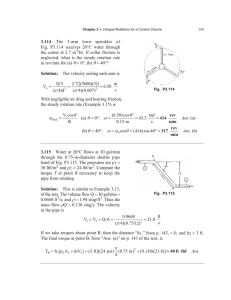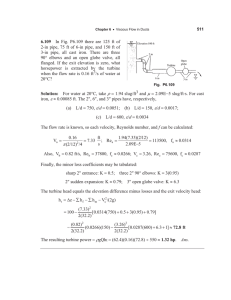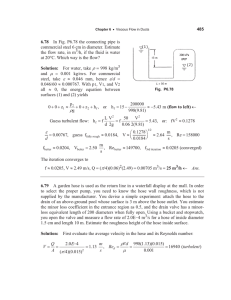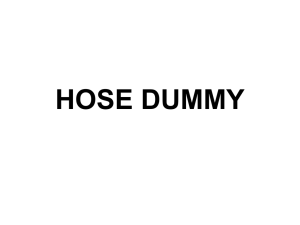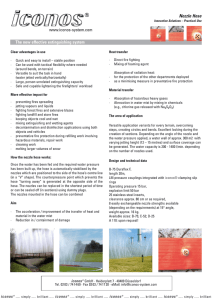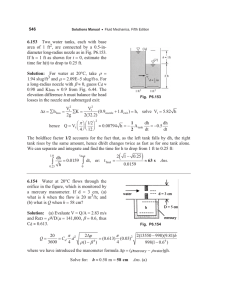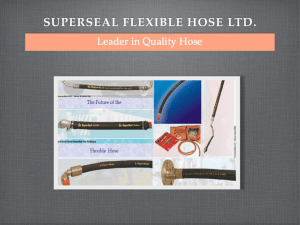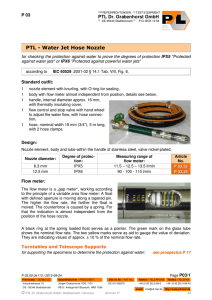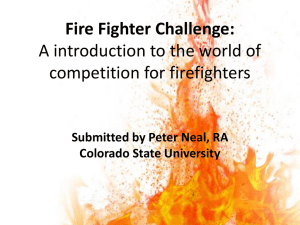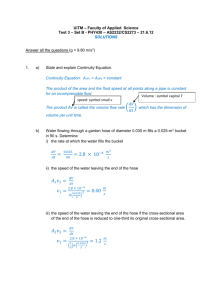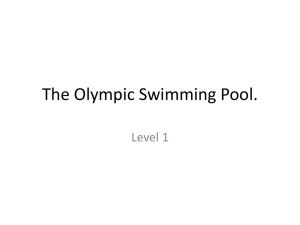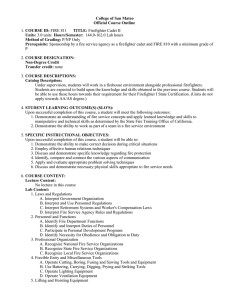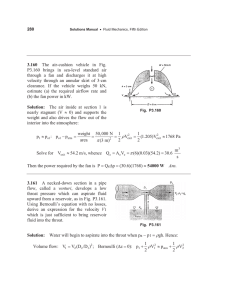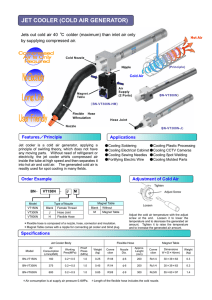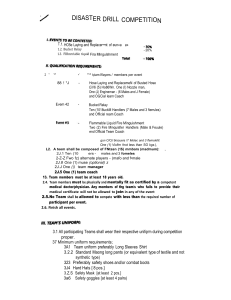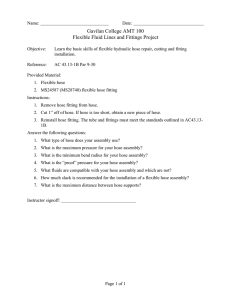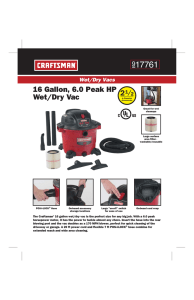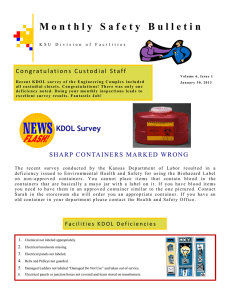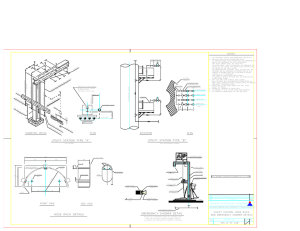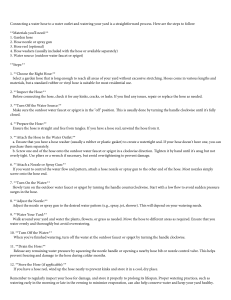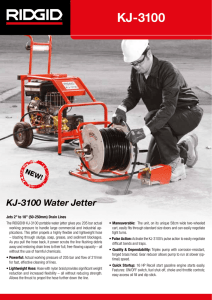6.75 100 ft of -in-diameter hose whose rough-
advertisement
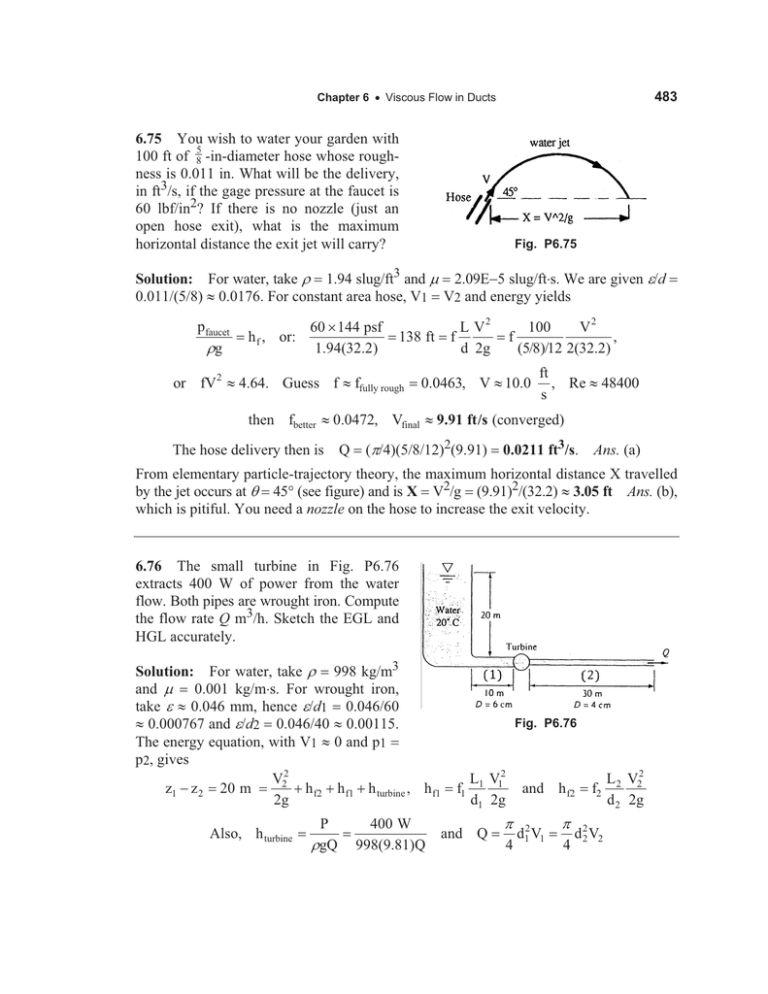
483 Chapter 6 x Viscous Flow in Ducts 6.75 You wish to water your garden with 5 100 ft of 8 -in-diameter hose whose roughness is 0.011 in. What will be the delivery, in ft3/s, if the gage pressure at the faucet is 60 lbf/in2? If there is no nozzle (just an open hose exit), what is the maximum horizontal distance the exit jet will carry? Fig. P6.75 Solution: For water, take U 1.94 slug/ft3 and P 2.09E5 slug/fts. We are given H/d 0.011/(5/8) | 0.0176. For constant area hose, V1 V2 and energy yields pfaucet Ug 60 u 144 psf h f , or: 1.94(32.2) 138 ft or fV 2 | 4.64. Guess f | ffully rough L V2 f d 2g 100 V2 f , (5/8)/12 2(32.2) 0.0463, V | 10.0 ft , Re | 48400 s then fbetter | 0.0472, Vfinal | 9.91 ft/s (converged) The hose delivery then is Q (S/4)(5/8/12)2(9.91) 0.0211 ft3/s. Ans. (a) From elementary particle-trajectory theory, the maximum horizontal distance X travelled by the jet occurs at T 45q (see figure) and is X V2/g (9.91)2/(32.2) | 3.05 ft Ans. (b), which is pitiful. You need a nozzle on the hose to increase the exit velocity. 6.76 The small turbine in Fig. P6.76 extracts 400 W of power from the water flow. Both pipes are wrought iron. Compute the flow rate Q m3/h. Sketch the EGL and HGL accurately. Solution: For water, take U 998 kg/m3 and P 0.001 kg/ms. For wrought iron, take H | 0.046 mm, hence H/d1 0.046/60 | 0.000767 and H/d2 0.046/40 | 0.00115. The energy equation, with V1 | 0 and p1 p2, gives V22 z1 z 2 20 m h f2 h f1 h turbine , h f1 2g Also, h turbine P UgQ 400 W 998(9.81)Q Fig. P6.76 L1 V12 f1 d1 2g and Q S 4 and h f2 d12 V1 S 4 L 2 V22 f2 d 2 2g d 22 V2
